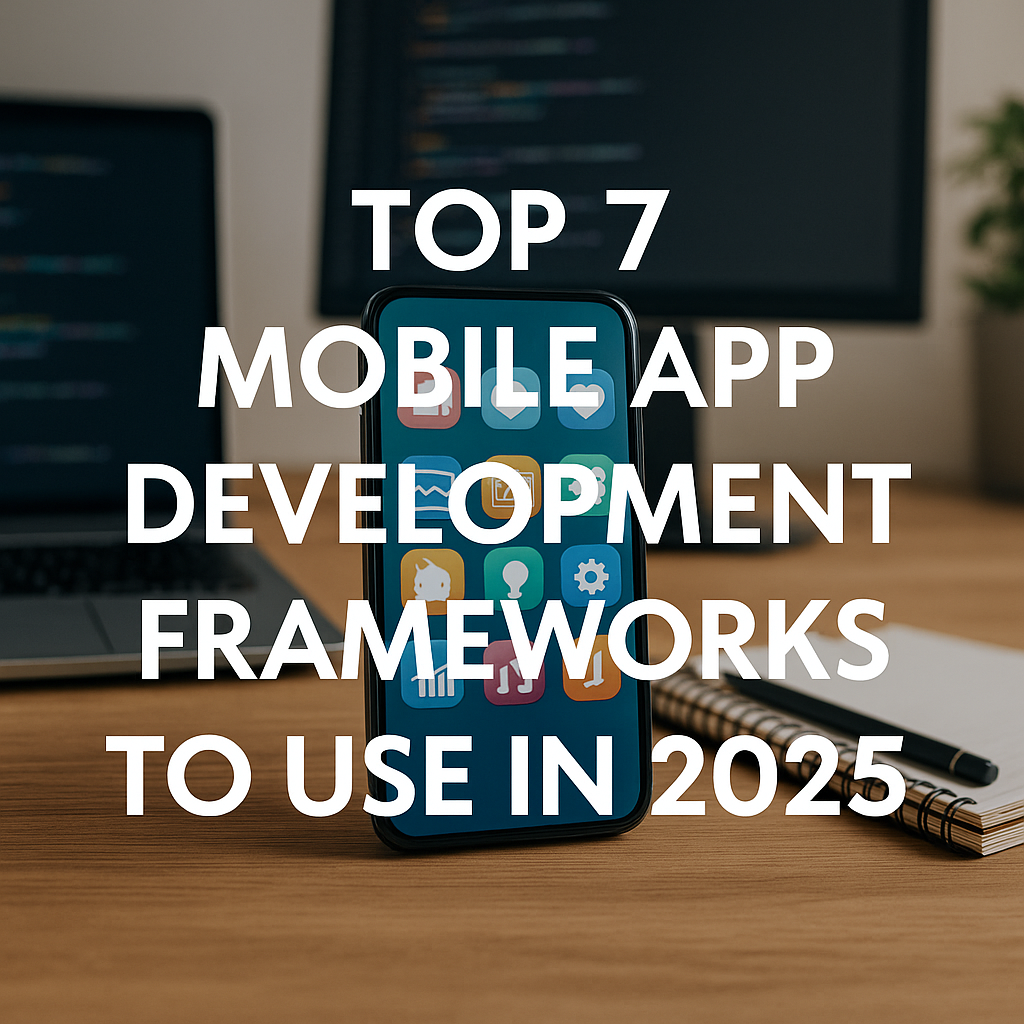Top 7 Mobile App Development Frameworks to Use in 2025

The Mobile App Development landscape is a constantly evolving frontier, driven by rapid technological advancements and ever-increasing user expectations. To build successful and future-proof applications in 2025, developers and businesses must stay ahead of the curve by embracing frameworks that offer efficiency, performance, and adaptability.
Here are the top 7 mobile app development frameworks poised to dominate in 2025:
1. Flutter
Developed by Google, Flutter has cemented its position as a leading choice for cross-platform development. It enables developers to build beautiful, natively compiled applications for mobile, web, and desktop from a single codebase.
-
Key Features: Utilizes the Dart programming language, offers a powerful rendering engine (Skia), boasts a rich set of customizable widgets, and provides "Hot Reload" for rapid development cycles.
-
Why in 2025: Its ability to deliver near-native performance and highly expressive UIs with remarkable speed makes it ideal for startups, e-commerce platforms, and enterprises prioritizing fast time-to-market and stunning visuals. Its growing ecosystem and Google's continuous support ensure its long-term relevance.
2. React Native
Backed by Meta (formerly Facebook), React Native remains a powerhouse in the cross-platform arena. It allows developers to build mobile apps using JavaScript and React, leveraging a massive existing developer community.
-
Key Features: Renders actual native UI components, offers a "Fast Refresh" feature for quick iterations, and benefits from a vast ecosystem of third-party libraries and tools.
-
Why in 2025: Its strength lies in code reusability, allowing businesses to target both iOS and Android with a single JavaScript codebase, saving time and resources. Its maturity and active community make it a reliable choice for social apps, marketplaces, and MVPs (Minimum Viable Products).
3. Swift (for iOS Native Development)
For those focused exclusively on the Apple ecosystem, Swift continues to be the definitive language. It offers unparalleled performance and deep integration with iOS, iPadOS, macOS, watchOS, and tvOS.
-
Key Features: A modern, safe, and high-performance programming language; provides direct access to all native Apple APIs; and is complemented by SwiftUI, Apple's declarative UI framework for building intuitive interfaces with less code.
-
Why in 2025: When uncompromising performance, seamless integration with Apple's hardware and software features, and access to the latest iOS capabilities are paramount, native Swift development is still the gold standard. It's ideal for high-performance games, intricate enterprise applications, or apps requiring deep hardware interaction.
4. Kotlin (for Android Native Development)
As Google's preferred language for Android Mobile App Development, Kotlin offers a modern, concise, and expressive alternative to Java. It's designed for developer productivity and app stability.
-
Key Features: Offers null safety to prevent common programming errors, supports coroutines for asynchronous programming, is fully interoperable with Java, and is increasingly supported by Jetpack Compose for declarative UI development.
-
Why in 2025: For Android-first strategies or applications demanding the highest level of Android-specific optimization and deep integration with the Android OS and its features, Kotlin is the top choice. Its conciseness and safety features lead to more robust and maintainable code.
5. Kotlin Multiplatform Mobile (KMM)
Emerging as a strong contender, Kotlin Multiplatform Mobile (KMM) allows developers to share non-UI code (like business logic, networking, and data storage) between iOS and Android applications, while still building native user interfaces for each platform.
-
Key Features: Shares common codebases for business logic while allowing for native UIs (SwiftUI/UIKit for iOS, Jetpack Compose for Android), offering a balance between code reusability and native user experience.
-
Why in 2025: KMM is gaining traction for projects where native UI performance is critical but shared logic can significantly accelerate development. It's an excellent solution for complex applications that benefit from consistent backend logic across platforms, such as fintech or healthcare apps, without compromising the distinct native feel.
6. .NET MAUI (formerly Xamarin)
.NET Multi-platform App UI (MAUI) is Microsoft's open-source framework for building native cross-platform apps with C# and .NET. It builds on the legacy of Xamarin, offering a unified approach to Mobile App Development across multiple platforms.
-
Key Features: Compiles C# code to native binaries for iOS, Android, macOS, and Windows; allows for extensive code sharing (especially business logic); and integrates seamlessly with Microsoft's robust developer tools like Visual Studio.
-
Why in 2025: .NET MAUI is particularly attractive for enterprises already invested in the Microsoft ecosystem, providing a powerful and familiar environment for building high-performance, secure cross-platform applications. Its comprehensive tooling and strong enterprise support make it a reliable choice for business-critical apps.
7. Ionic
Ionic is an open-source framework that leverages standard web technologies (HTML, CSS, JavaScript) to build hybrid applications and Progressive Web Apps (PWAs). It often integrates with popular front-end frameworks like Angular, React, or Vue.js.
-
Key Features: Offers a vast library of pre-built UI components, provides "write once, run anywhere" capabilities, and utilizes Capacitor (a native runtime) for accessing device features.
-
Why in 2025: Ionic excels in rapid prototyping and building apps where speed to market and web developer expertise are key. Its strong support for PWAs means businesses can offer app-like experiences directly through web browsers, bypassing app store hurdles and reaching users instantly. While not strictly native in rendering, continuous performance improvements make it a viable option for many business and content-driven applications.
The choice of framework in 2025 will increasingly depend on balancing native performance requirements with the need for rapid, cost-effective Mobile App Development across diverse platforms. Each of these frameworks offers unique strengths, catering to different project needs and strategic goals.
- Art
- Causes
- Crafts
- Dance
- Drinks
- Film
- Fitness
- Food
- Games
- Gardening
- Health
- Home
- Literature
- Music
- Networking
- Other
- Party
- Religion
- Shopping
- Sports
- Theater
- Wellness
